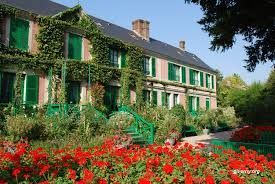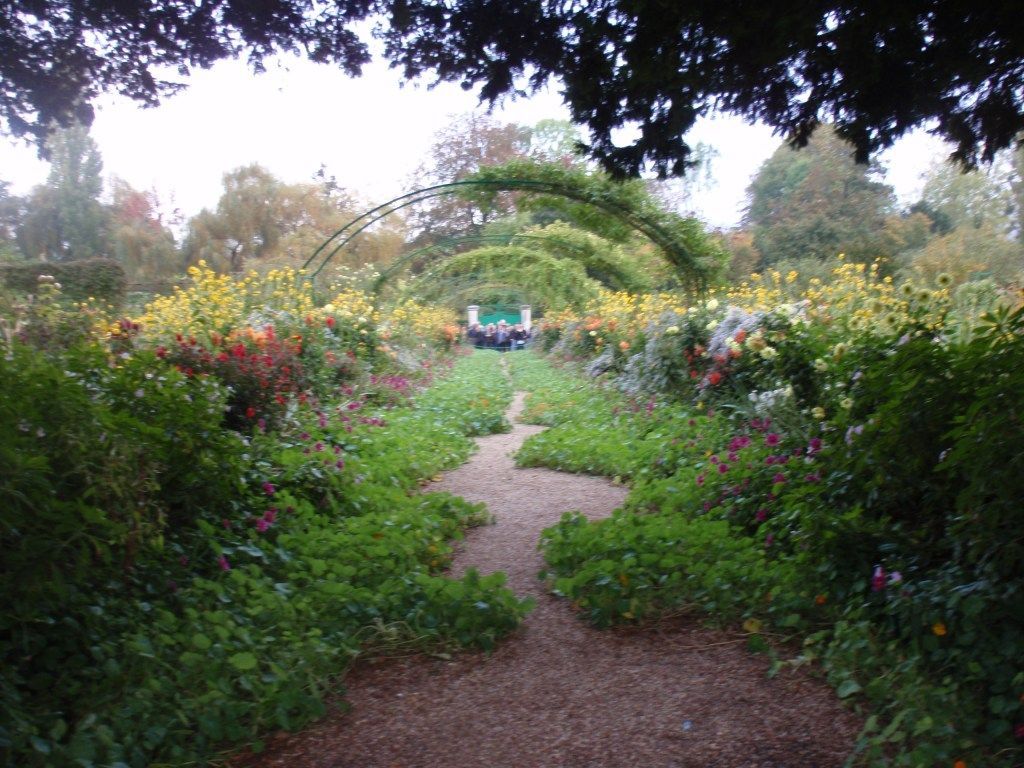On a recent trip to France, I was finally going to see Monet’s house and gardens, one of the most popular tourist sites in France. Monet lived there for many years with his large family, and often entertained artists, who came to set up easels and sketch. In fact, he is said to have started the “painting in plein air” movement.
Over time, he put considerable effort to rebuilding the flower plots and bushes so that there would be the appearance of layers. As our visit drew closer, I began to think of “what-ifs.” Would it be pouring rain on the day we had chosen an excursion there? It was late October. Could a sudden frost kill the flowers in one of the world’s most highly acclaimed botanic gardens before we got there? Though it was misty—hood rather than umbrella weather and overcast for better photos—the colors of fall were in full splendor when we arrived.. Willow, Japanese cherry, apple, and maple trees hovered over shorter plants. Daisies, begonias, and dahlias, and other varieties stood up in bright yellows, purples, and reds. Bushes and trees had been planted to give the effect of levels of contrasting greens. The Nymphaeas, or water lilies, so prolific in his paintings, had slightly hoodwinked buds in their centers, as if ready for winter. However, they still floated elegantly in the streams and ponds.
Monet had spent many years designing the acres of gardens, and at one point had even diverted a stream so the lilies would be accentuated. “You are seeing Giverny at an adult height,” said the guide as we entered the long pathway toward the house.”If you were to come in the spring, when the flowers have just been planted, everything would be on a child’s level.”



